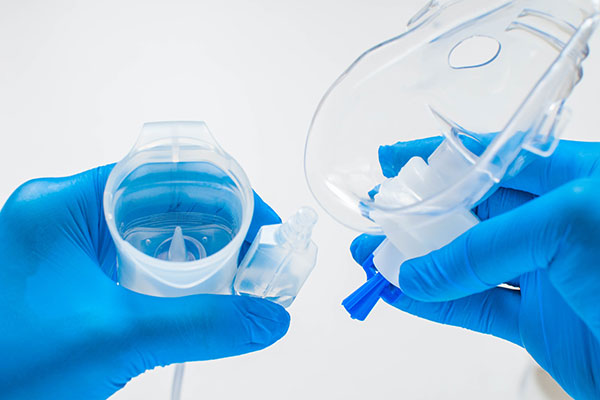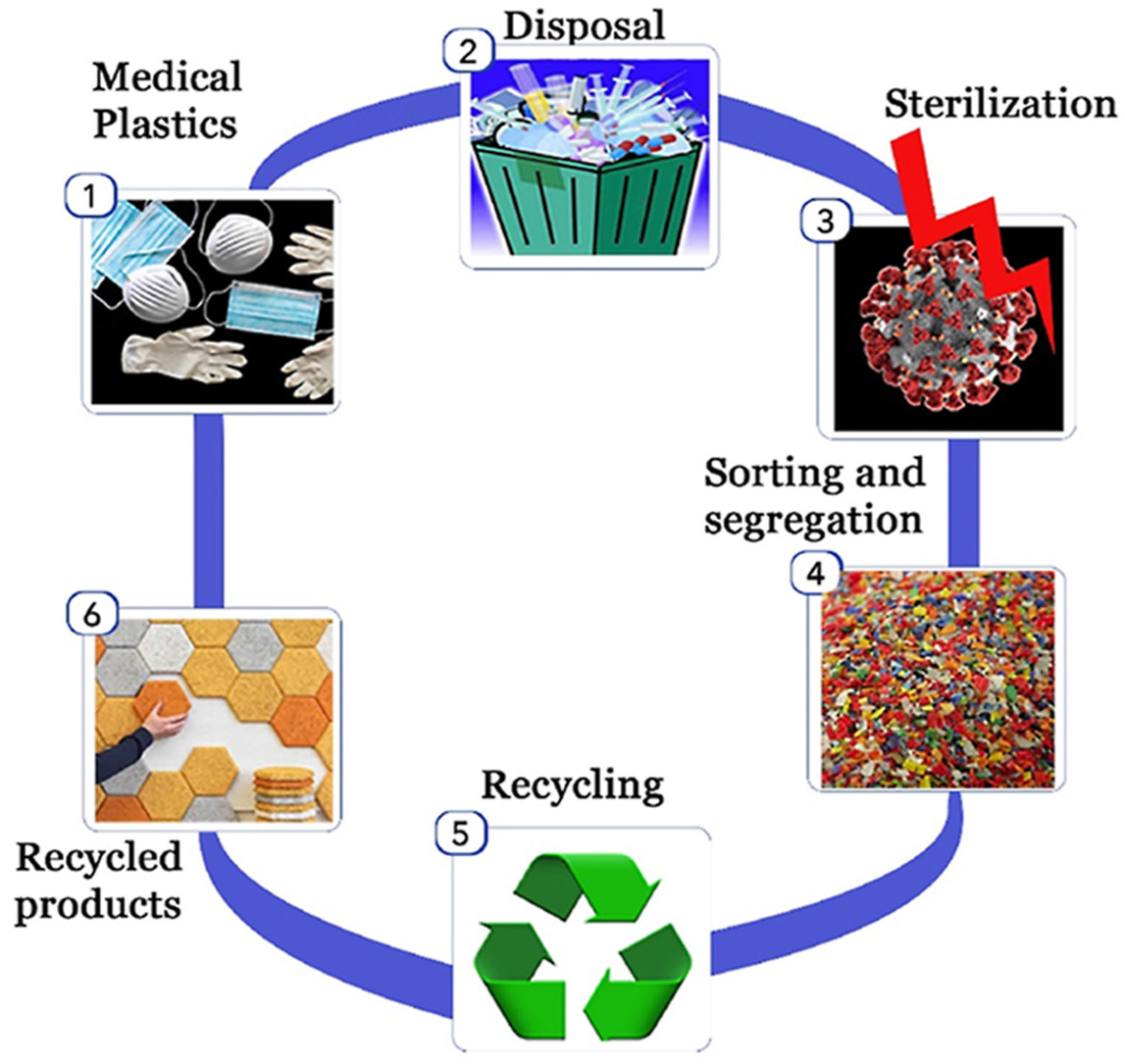 According to a report by Markets and Markets, the global market size of medical plastics valued around $22.8 billion in 2019 and is expected to reach $31.7 billion by 2024, a CAGR of 6.8%.
According to a report by Markets and Markets, the global market size of medical plastics valued around $22.8 billion in 2019 and is expected to reach $31.7 billion by 2024, a CAGR of 6.8%.
Equipment traditionally made of steel, ceramic or glass is now being made of plastics. Examples are disposable items, bedpans, inhalation masks and IV tubes. Plastic is also used for tamper-proof caps, ensuring that no foul play is present in pharmaceuticals. Plastics are also used as bags for storing fluids and for medical tubing. The PVC blood bag enabled a revolution in blood collection and preparation.
Common plastics used in medical applications
Polymers used for medical applications will often need to be resistant to temperatures, chemicals and corrosion. Metal and glass equipment is prone to corrosion and shattering.
The plastics employed in medical applications should be biocompatible, haemo-compatible, resistant to sterilization, stable and should possess sufficient shelf life. Plastics can be sterilized using gamma rays.
In general, amorphous materials have better overall toughness and creep resistance than semi-crystalline materials. Examples of amorphous materials that are commonly used in the healthcare industry include Acrylic, ABS, polycarbonate, polysulfone, polyethersulfone (PES), and polyphenylsulfone (PPSU).
In semi-crystalline materials, there are ordered, crystalline regions amongst the random polymer chains. The formation of these regions during processing, called crystallization, increases polymer shrinkage. It also causes the shrinkage to be less uniform, resulting in potential warping of a molded part. However, these negatives can be outweighed by superior chemical resistance, wear resistance, and excellent response to reinforcement. Fiber-reinforced semi-crystalline materials generally offer very high overall strength and stiffness. Semi-crystalline polymers that are commonly used in the healthcare industry include polypropylene, polyethylene, nylon and polyetheretherketone (PEEK). Polypropylene and polycarbonate are two common polymers used in several applications, from MRI casings to surgical tools.
Polyvinyl chloride (PVC): the most used medical polymer. Inexpensive, yet wide range of properties such as gloss, transparency, chemically resistance, flexibility, serializability by steam, ETO (ethylene oxide processing), high energy irradiation and inertness to fluids. Can be rigid or flexible.
- Semi-rigid PVC used for drip chambers, thermoformed trays, blister packaging. Highly plasticized flexible PVC is used in face masks, bags for IV, drug solutions, nutrients, renal peritoneal solutions and blood and tubing for infusion, injection, respiration and fluid suction.
- The PVC blood bag can withstand the high g-force of the centrifuge that separates blood into plasma, red blood cells, and platelet concentrates. This enables safe and easy preparation of multiple blood components from a single unit of whole blood.
Polyethylene: light, flexible, chemically inert, great resistance to organic solvents, can sterilize, does not degrade over time.
- Ultrahigh molecular weight polyethylene (UHMWPE) is a linear semi-crystalline polymer used in orthopedic implants, mainly knee or hip replacements. UHMWPE has a low friction coefficient, high wear resistance, high impact strength, high resistance to corrosive chemicals, good biocompatibility, and low cost.
Polypropylene: high chemical resistance, high transparency, toughness and bacterial resistance, good resistance to steam sterilization. Used for packaging and disposable syringes as a replacement for traditional glass.
- Also resistant to impact and corrosion, durable. Go-to option for weight-bearing prosthetics. Polypropylene sutures are commonly used in cardiothoracic surgery.
Polycarbonate: easy to sanitize, good UV protection, doesn’t deform from exposure to high temperatures or steam. Common for signage and panels. Also used for making syringes, tubes, stents.
Polystyrene: tissue culture trays, test tubes, Petri dishes, diagnostic components, housings for test kits
Acrylonitrile butadiene styrene (ABS): sheets are durable and tough, providing a clean aesthetic appearance for medical environments.
Polyethylene terephthalate glycol (PETG): safe to use in contact with food. Also used for sterilization trays.
Acrylic (polymethyl methacrylate): optical properties similar to glass. Good option for endoscopic implants.
Advanced developments
There are also several patient treatment methods that use plastic, such as internal implants, catheters and joint replacements. 3D printing makes it much easier to create inexpensive, comfortable prosthetics and customized implants. In the future, 3D printing could also recreate bones or organs to study or prepare a surgery.
Researchers are currently testing an injectable plastic that could help gently staunch bleeding due to internal trauma. And others have found a way to use polyurethane foam to create a structure on which new bone tissues can develop.
While the technology is not yet viable as a lifelong solution, artificial hearts made of special medical plastic are helping extend patients’ lives as they wait for heart transplants.
When combined with skin stem cells, plastic can be used as skin grafts to heal burns and ulcers. Self-healing polymers can repair themselves after being cut.
Another innovation being studied are polymers that use electrical conductivity to mimic the sensitivity that organic skin experiences. Such a polymer could be used to create prosthetics with touch sensitivity, which would help prosthetic users regain their sense of touch.
There are also special plastics used in medical devices with antimicrobial surfaces. Such surfaces are highly effective at both repelling and killing dangerous bacteria, even if they aren’t regularly sterilized.
Many plastics are also hypoallergenic, so patients with allergies to traditional medical materials like latex are at a lower risk of reaction during treatment.
Recycling of medical plastics
The spread of dangerous infections and diseases can be prevented by simply disposing of single-use surgical tools after a procedure is finished, and plastics are ideal for these.

Shatter-proof and impermeable polymers are useful for safely transporting biohazardous materials. The safe removal of medical waste helps prevent the spread of dangerous pathogens.
But the mismanagement of medical plastics is causing serious health issues and can be a reason for long-term pollution. Humanity needs to find economically viable solutions for recycling plastics. Much non-infected plastic waste is generated at healthcare facilities all over the world. However, only a small fraction is recycled. Conventionally, the used plastics are either disposed of in landfills or inadequately incinerated.
The outbreak of COVID-19 clearly showed the growing demand for single-use plastics. Medical plastic recycling is limited, mainly due to difficulties involved in sorting or cleaning. Recycling medical plastic wastes is possible only through proper coordination between the healthcare sector and recycling industries. New recycling technologies are needed, and the plastics used in medical applications should be designed such that recycling is possible.
Recycling starts with identifying the materials for recycling, followed by sorting the materials. Manual sorting is possible; however, the process is labor-intensive. Here plastics are sorted based on their color, shape, type of material etc. Automated sorting techniques have received considerable attention. Near infra-red (NIR) provides a high speed of identification. This technique is effective for transparent plastics. X-ray fluorescence has been used for separating PVC from PET. Separation techniques like density separation, froth flotation techniques that use surfactants, electrostatic sorting, air sorting etc., are also employed.
Source:
Advanced Industrial and Engineering Polymer Research Volume 4, Issue 3, July 2021
For access to UL Prospector’s medical plastics specialty filters, upgrade to the Unlimited Premium plan. Learn more.
The views, opinions and technical analyses presented here are those of the author or advertiser, and are not necessarily those of ULProspector.com or UL Solutions. The appearance of this content in the UL Prospector Knowledge Center does not constitute an endorsement by UL Solutions or its affiliates.
All content is subject to copyright and may not be reproduced without prior authorization from UL Solutions or the content author.
The content has been made available for informational and educational purposes only. While the editors of this site may verify the accuracy of its content from time to time, we assume no responsibility for errors made by the author, editorial staff or any other contributor.
UL Solutions does not make any representations or warranties with respect to the accuracy, applicability, fitness or completeness of the content. UL Solutions does not warrant the performance, effectiveness or applicability of sites listed or linked to in any content.


